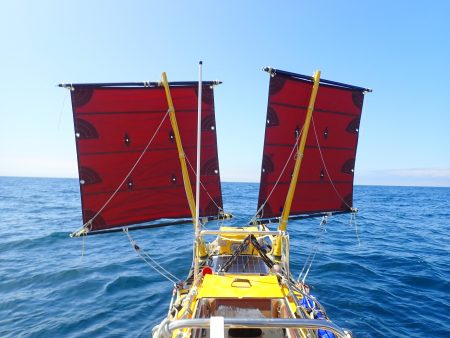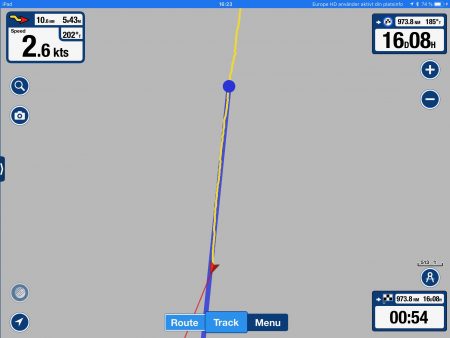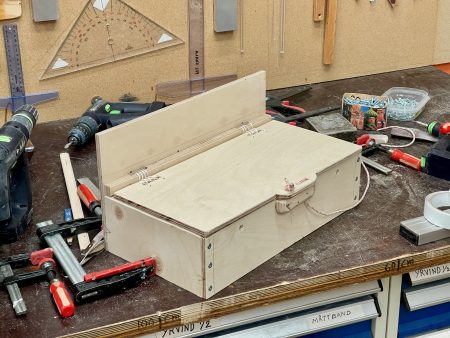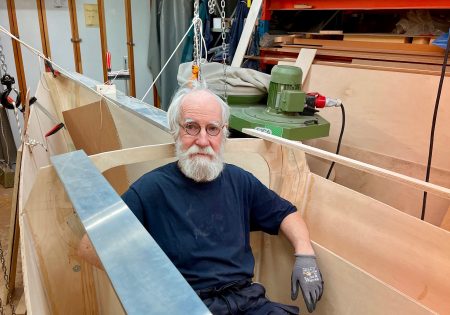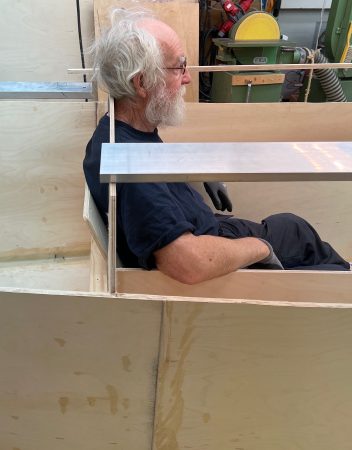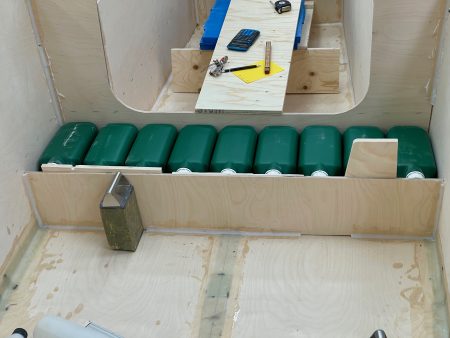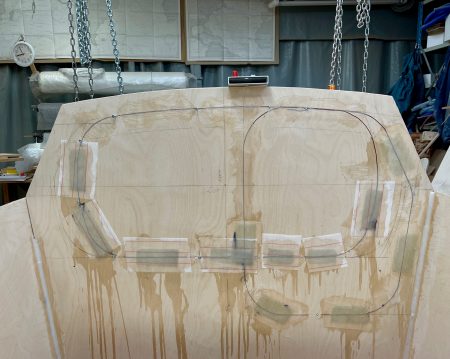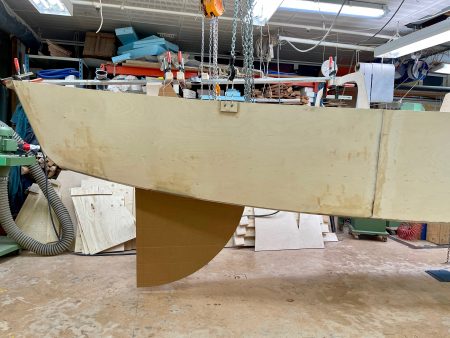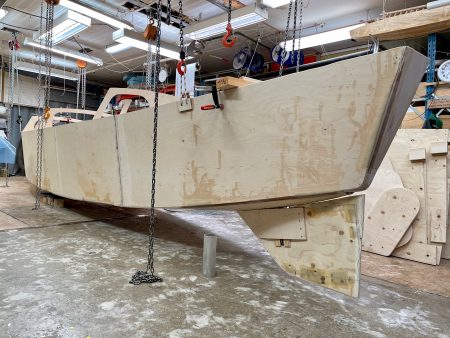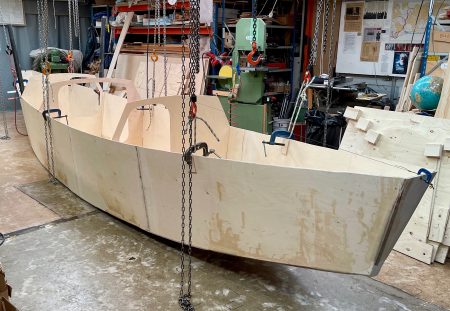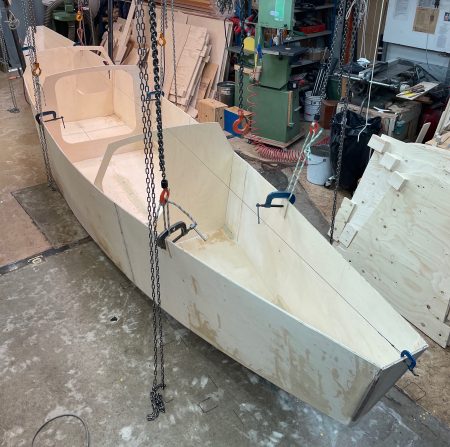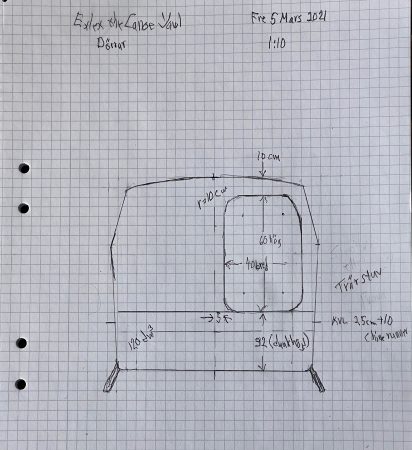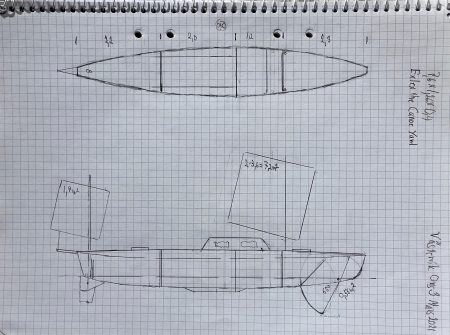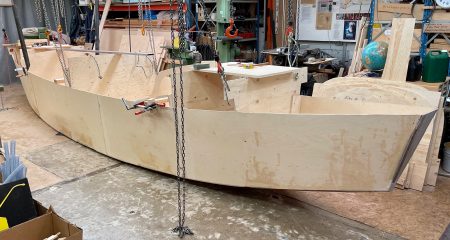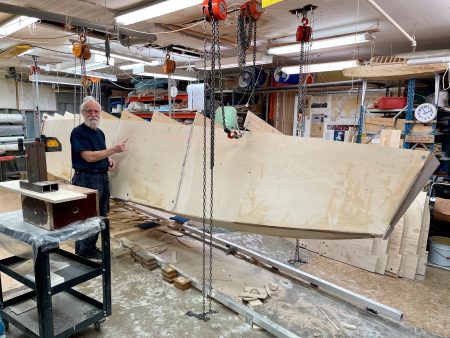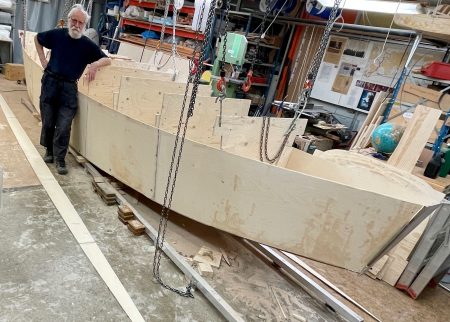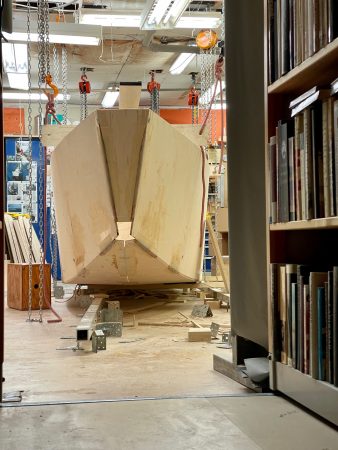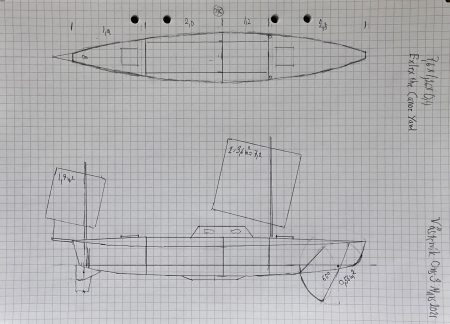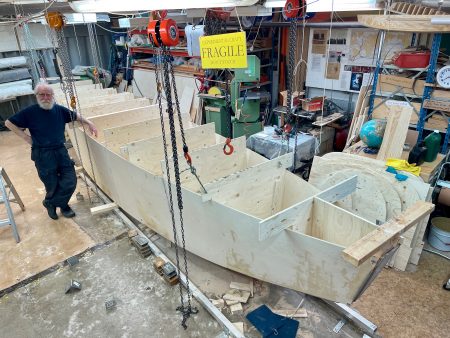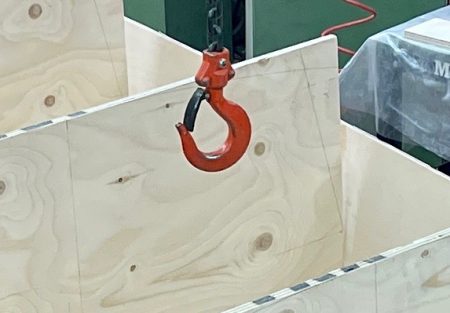Exlex of 2018 and 2020 had daggerboads. They are simple to make but more complicated to control remotly with lines. On Amphibie Bris 15 feet long of 1989 I used a bow centerboard. I sailed her from France to Newfoundland. It worked well.
Now I try again. I like to have one line pulling the board up and one line pulling her down. The problem is to avoid that the lines interfer with each other or get jammed. The bigger angle the centerbord is tuned the bigger the problem. To get much useful lateral area I like to turn the centerboard down about 80°. Large lateral area is very useful when slowly forereaching into a gale. I prefer that method to heaving to. You can make some slow progress to windward in comfort.
The centerboard case is open at the deck. That way it is possible arrange with a lever to move the centerboard in the unlikely event of the lines breaking. I will use oversize lines. 16 or 18 mm or something like that. Big diameter lines are also less likely to get jammed between the centerboard and the centerboard case.
By being able to turn the centerboard with levers I can attach new controlling lines. Exactly how it is going to be done I have to work out but I have some Ideas. It will be more easy to see as work progres.
Below is a video.
To be continued…
Regards Yrvind.

